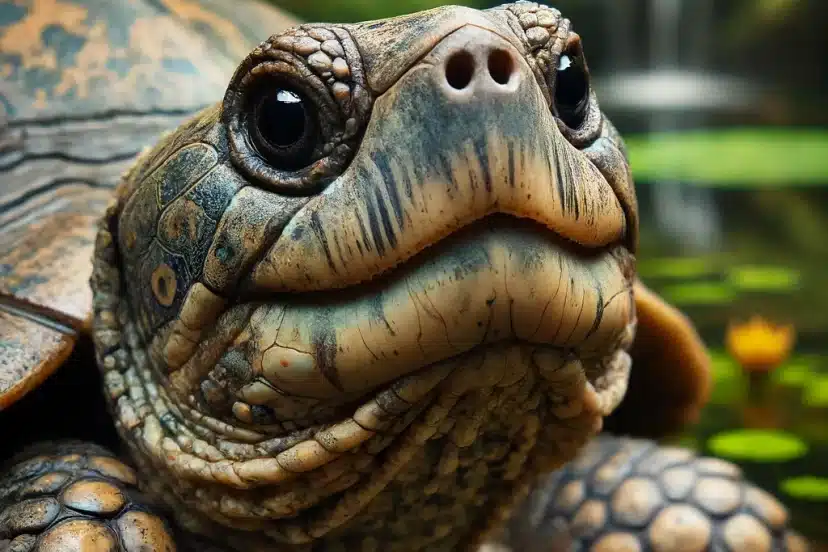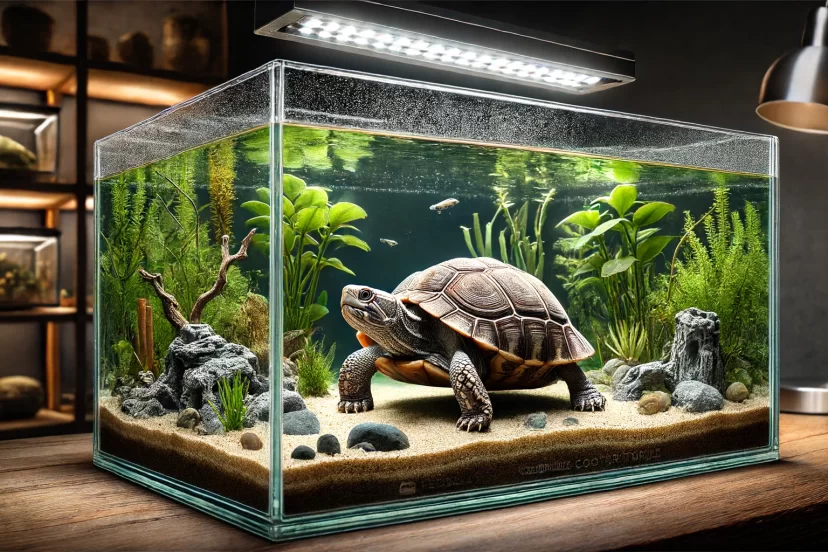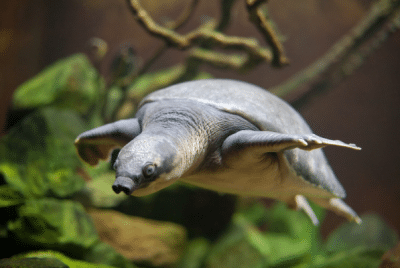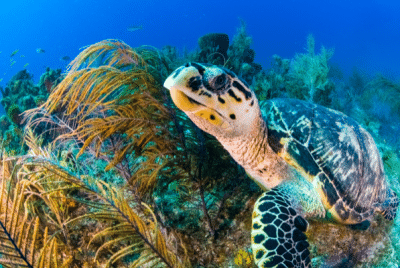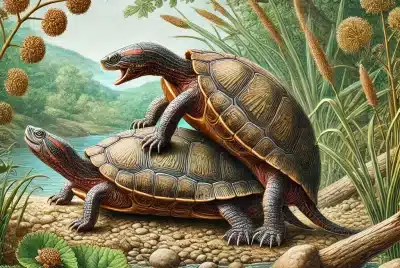What is the Lifespan of a Peninsula Cooter?
If you’re considering getting a Peninsula Cooter as a pet or already have one, you might be curious about how long these fascinating creatures can live. Well, I’m here to uncover the truth and leave no stones unturned. Let’s dive right in!
Understanding Peninsula Cooters
Overview of Peninsula Cooters
Peninsula Cooters, also known as Pseudemys peninsularis, are freshwater turtles native to the southeastern United States. They are known for their distinctive yellow and black markings and are a popular choice among turtle enthusiasts due to their relatively manageable care requirements.
Natural Habitat
In the wild, what is the lifespan of a Peninsula Cooter is influenced by their natural habitat. These turtles are commonly found in rivers, lakes, and ponds throughout the southeastern United States. They thrive in slow-moving waters, which are crucial for their survival and overall well-being. These habitats provide the necessary conditions that support a longer lifespan of Peninsula Cooters.
One of the key factors that contribute to the lifespan of a Peninsula Cooter in the wild is the abundance of vegetation. Aquatic plants not only serve as a primary food source but also offer essential hiding spots from predators. The dense vegetation in their natural habitats allows Peninsula Cooters to camouflage and protect themselves from threats, which directly impacts their longevity.
Additionally, the slow-moving waters in rivers, lakes, and ponds create an ideal environment for Peninsula Cooters to thrive. These conditions help maintain stable water temperatures and quality, crucial for their health. The presence of various microhabitats within these water bodies, such as shallow areas for basking and deeper zones for swimming, provides a diverse and enriching environment that can potentially determine the lifespan of a Peninsula Cooter.
Overall, the combination of slow-moving waters and abundant vegetation plays a significant role in enhancing the lifespan of a Peninsula Cooter in the wild. By understanding and replicating these natural conditions in captivity, turtle enthusiasts can help ensure their pets live long, healthy lives.
Physical Characteristics
Peninsula Cooters can reach impressive sizes, with adults growing up to 15 inches in shell length. Their streamlined shells are a marvel of nature, enhancing their swimming efficiency and agility in water. This sleek design, coupled with their webbed feet, makes Peninsula Cooters exceptionally adept at navigating their aquatic environments. These features are crucial for their survival, enabling them to escape predators and forage for food effectively.
The combination of size and streamlined structure significantly impacts the lifespan of Peninsula Cooters, as it directly influences their ability to thrive in various habitats. If you’re curious about what is the lifespan of a Peninsula Cooter, understanding their physical adaptations provides valuable insights into their longevity and overall health. These turtles’ robust and agile nature is a testament to their well-adapted physiology, contributing to their extended lifespan in both wild and captive settings.
Factors Influencing Lifespan
Diet and Nutrition
Ideal Diet for Peninsula Cooters
A balanced diet is crucial for the longevity of your Peninsula Cooter. Understanding what is the lifespan of a Peninsula Cooter involves recognizing the importance of nutrition. These turtles are omnivores, meaning they consume both plant and animal matter. To ensure the optimal lifespan of Peninsula Cooters, provide a healthy diet that includes a variety of leafy greens, aquatic plants, and protein sources such as insects, fish, and commercial turtle pellets. This diverse diet supports their overall health, boosting their immune system and enhancing their longevity. Proper nutrition is key to maximizing the lifespan of Peninsula Cooters in captivity.
Importance of Freshwater
Maintaining clean, fresh water is vital for the health and longevity of Peninsula Cooters. These turtles require water not only for swimming but also for drinking and eating. Ensuring the water in their tank is regularly changed is key to preventing the buildup of harmful bacteria. This practice is essential for extending the lifespan of Peninsula Cooters, as it helps avoid diseases and health issues. By providing a pristine aquatic environment, you significantly contribute to what is the lifespan of a Peninsula Cooter, promoting their overall well-being and ensuring a long, healthy life.
Habitat and Environment
Tank Size and Setup
To ensure your Peninsula Cooter thrives and enjoys a long, healthy life, it’s essential to provide a spacious tank. When considering the ideal tank size, a good rule of thumb is to have at least a 75-gallon tank for an adult Peninsula Cooter. This ample space allows them to swim freely and engage in natural behaviors.
Additionally, include basking spots, hiding areas, and plenty of vegetation to mimic their natural habitat. Creating an environment that closely resembles their natural surroundings is crucial for the overall well-being and lifespan of Peninsula Cooters. Proper habitat setup significantly contributes to what is the lifespan of a Peninsula Cooter in captivity.
UVB Lighting and Heating
Proper lighting and heating are vital for the optimal lifespan of Peninsula Cooters. UVB lighting is essential as it helps them synthesize vitamin D3, which is crucial for calcium absorption and maintaining shell health. To ensure the best conditions, maintain a basking area with temperatures around 85-90°F and keep the water temperature between 75-80°F.
These specific temperature ranges are critical for the well-being of Peninsula Cooters, promoting healthy metabolism and preventing common health issues. By providing the right lighting and heating, you can significantly enhance the lifespan of your Peninsula Cooter, ensuring they thrive in captivity.
Health Care and Veterinary Visits
Common Health Issues
Like all pets, Peninsula Cooters can face health issues that may impact their lifespan. Common problems include respiratory infections, shell rot, and vitamin deficiencies. Addressing these health concerns is crucial to ensure a long, healthy life for your turtle. To maximize the lifespan of Peninsula Cooters, it’s essential to provide a clean habitat, a balanced diet, and proper UVB lighting. Regular veterinary check-ups are also vital. By being proactive about their health, many of these issues can be prevented, significantly enhancing what is the lifespan of a Peninsula Cooter in captivity. Proper care and attention are key to their longevity.
Regular Check-ups
Schedule regular checkups with a qualified reptile veterinarian. These specialists can identify early signs of illness in your pet, like nutritional deficiencies or parasites, before they become serious. During a reptile wellness exam, the vet will assess your lizard, snake, or turtle’s overall health, ensuring you have the knowledge and tools to provide the best possible care at home.
Typical Lifespan in the Wild
Average Lifespan
Wondering how long pet Peninsula Cooters live? In their natural habitat, these freshwater turtles boast a lifespan of 20-30 years. But did you know a Peninsula Cooter’s lifespan can be impacted by its environment? Factors like access to nutritious food, clean water conditions, and avoiding predators all play a crucial role in their longevity.
Predators and Natural Threats
Vulnerable Peninsula Cooter hatchlings face a predator gauntlet from raccoons, birds of prey, and large fish. This high mortality rate in their early life stages makes the species more susceptible to decline. Environmental threats like habitat loss from development and water pollution further endanger Peninsula Cooters, impacting their long-term survival and population stability.
Lifespan in Captivity
Enhanced Longevity
Captive Peninsula Cooters can thrive for decades! With proper care, these freshwater turtles can surpass their wild lifespan, potentially living 30-40 years or even longer. This impressive longevity is attributed to several factors: a controlled environment that minimizes stress, a consistent feeding schedule, and the absence of predators that threaten them in the wild.
Common Mistakes to Avoid
Boost your turtle’s lifespan by avoiding these common care mistakes: improper diet lacking essential nutrients, inadequate tank setup, missing UVB lighting or basking areas, and ignoring signs of illness that require veterinary attention. Informed turtle ownership through research and preventive care can significantly extend your pet’s lifespan.
Tips for Extending Your Peninsula Cooter’s Lifespan
Proper Nutrition
Offer a nutrient-rich variety of foods including vegetables, high-quality commercial pellets, and occasional treats like insects or shrimp. Prevent overfeeding to avoid obesity and digestive issues.
Ideal Habitat Conditions
For a thriving Peninsula Cooter in captivity, ensure their aquatic environment replicates their natural habitat. Maintain pristine water quality with a proper filtration system and regular water changes. Provide UVB lighting to mimic the sun’s rays, essential for vitamin D synthesis and overall health. Offer a basking area that allows them to fully emerge and dry out comfortably. Regular tank cleaning is crucial to remove waste products and prevent the growth of harmful bacteria.
Regular Health Monitoring
Don’t miss subtle signs your turtle might be unwell! Watch for changes in appetite, lethargy, or unusual shell appearance. Early intervention is key – a reptile vet can diagnose and treat issues before they escalate. Schedule regular checkups for preventive care, promoting a long and healthy life for your shelled companion!
Conclusion
In summary, the lifespan of a Peninsula Cooter can vary significantly based on care and environment. With the right diet, habitat, and health care, your Peninsula Cooter can be a long-lived and rewarding pet.
FAQs
How often should I feed my Peninsula Cooter?
You should feed adult Peninsula Cooters every 2-3 days, while juveniles require daily feeding.
Can Peninsula Cooters live with other turtles?
Yes, but ensure the tank is large enough and that all turtles have similar care requirements to prevent stress and competition.
What are the signs of a healthy Peninsula Cooter?
A healthy Peninsula Cooter is active, has clear eyes, a hard shell without deformities, and a good appetite.
How can I tell the age of my Peninsula Cooter?
Estimating a turtle’s age can be tricky. Shell size and growth rings can provide clues, but they are not always accurate.
Is it necessary to have a vet specialized in reptiles?
Yes, a reptile vet can provide the specialized care that general vets might not be equipped to handle.

